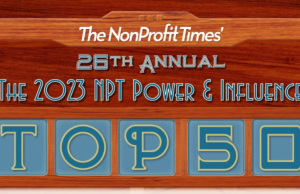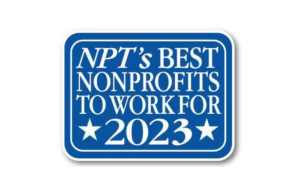“What’s a charity?” A recent survey asked that question and the results were pretty much all over the board, not only across organizations but also about the sector as a whole.
The 14-page report by Grey Matter Research and Harmon Research surveyed more than 1,000 American adults to find out what terminology people use for the entire Third Sector. People also were asked what types of organizations they tend to think of as “charities.”
The survey did not ask people whether or not various types of organizations actually are charities, accept donations, rely on donations for funding, or any other question about what people know. Instead, they were asked how they tend to think of various types of organizations: When you hear about “a charity,” as in “Ann just donated to her favorite charity,” how do you think of that word? What types of organizations do you usually think of as “charities”?
Respondents had the option of 14 different types of organizations listed in the survey responses:
- Homeless shelters, 89%
- Animal rescue shelters, 86%
- Children’s hospitals, 70%
- Missionary organizations, 66%
- Faith-based organizations, 57%
- Churches, 50%
- Service clubs, 39%
- Hospitals, 27%
- Public television/radio, 25%
- Museums, 24%
- Charter schools, 12%
- Private schools, 11%
- Political parties, 10%
- Universities/colleges, 10%
There are two commonalities among many of the categories which are less likely to be thought of as charities. One is they have other sources of funding. Universities and private schools have tuition. Charter schools receive state and federal funding. Hospitals have insurance payments and patient fees. Service clubs collect membership dues. Public broadcasting gets government funding and corporate sponsorships. Museums have entrance fees.
Organizations that are perceived to have no other funding sources are more likely to be thought of as “charities,” according to the report, while others such as museums and hospitals struggle in this area. Fundraisers need to consider not just how to raise awareness of organizations in certain categories, but also how to overcome perceptions that an organization may not even be a charity because it has other sources of funding. Organizations the public tends to think of as charities are particularly likely to be perceived as helping the vulnerable or less fortunate.
While only about a quarter of people think of hospitals as charities — not good news if you’re asking for donations — almost three times as many think of children’s hospitals as charities. The report suggested the disparity could be due to the national, high-visibility branding and fundraising efforts of St. Jude and Shriners Children’s. And if that’s the case, it also could show the power that strong campaigns have to create awareness.
People who attend religious worship services monthly or more are far more likely to see missionary organizations, faith-based organizations, and congregations as charities than are those who don’t attend services. People who identify with a religion – any religion – are also substantially more likely to think of each of these types of organizations as charities than are those who don’t identify with any religious group.
Even religious people are less likely to think of various religious organizations as charities than they are to see a homeless shelter or an animal rescue shelter in that way.
Perceptions of what is a charity vary some by generation. Baby Boomers and particularly Seniors are more likely than others to think of religious missionary organizations as charities as well as religious congregations. The younger the respondent, the more likely he or she is to think of general hospitals as charities. Conversely, the younger they are, the less likely they are to think of public TV or radio stations in this way. Generation Z and especially Millennials are more likely than others to see charter schools as charities — although that doesn’t extend to private schools or universities.
What do people call the nonprofit sector exactly? Half prefer some version of nonprofit, whether that’s nonprofit organization (28%), nonprofit (12%) or not-for-profit organization (10%). More than a third (35%) use some form of the word charity, almost equally divided between those who talk about charitable organizations (19%) and those who simply use charity (16%). About 1 in 8 people surveyed (13%) eschew either of these approaches, calling such entities donor-supported organizations.
Just 2% tend to think of these organizations as ministries, a term which is mostly found in some Christian circles. Even among self-described Christians (1%), Protestants (2%), and regular worship-goers (2%), this word is rarely used to describe organizations that seek funding through donations. Generation Z and Millennials rarely use not-for-profit organization, but the younger the person, the more likely to use the term charity.








